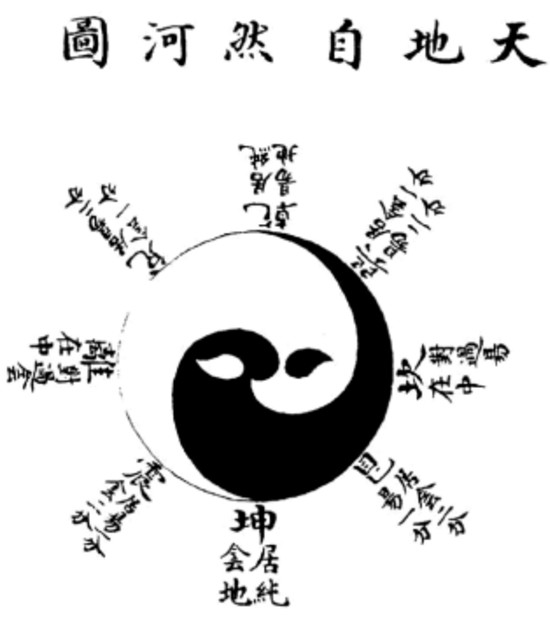Ba gua jiao (Cult)
Enlarge text Shrink text- Work cat.: 91187258: Ma, H. Chʻing tai pa kua chiao, 1989.
- Fairbank, J.K. China : a New History, 1992:p. 191.
- Perkins, D. Encyc. of China:p. 141 (Eight Trigrams Rebellion: an 1813 uprising against the Manchu Qing dynasty by a sect that named itself for the traditional Chinese system of categorizing aspects of nature for divination. Eight Trigrams sect was a revival of the White Lotus Secret Society.)
- Tzʻu hai, 1979.
The bagua (Chinese: 八卦; pinyin: bāguà; lit. 'eight trigrams') is a set of symbols from China intended to illustrate the nature of reality as being composed of mutually opposing forces reinforcing one another. Bagua is a group of trigrams—composed of three lines, each either "broken" or "unbroken", which represent yin and yang, respectively. Each line having two possible states allows for a total of 23 = 8 trigrams, whose early enumeration and characterization in China has had an effect on the history of Chinese philosophy and cosmology. The trigrams are related to the divination practice as described within the I Ching and practiced as part of the Shang and Zhou state religion, as well as with the concepts of taiji and the five elements within traditional Chinese metaphysics. The trigrams have correspondences in astronomy, divination, meditation, astrology, geography, geomancy (feng shui), anatomy, decorative arts, the family, martial arts (particularly tai chi and baguazhang), Chinese medicine and elsewhere. The bagua can appear singly or in combination, and is commonly encountered in two different arrangements: the Primordial (先天八卦), "Earlier Heaven", or "Fuxi" bagua (伏羲八卦) and the Manifested (後天八卦), "Later Heaven", or "King Wen" bagua. In the I Ching, two trigrams are stacked together to create a six-line figure known as a hexagram. There are 64 possible permutations. The 64 hexagrams and their descriptions make up the book. The trigram symbolism can be used to interpret the hexagram figure and text. An example from Hexagram 19 commentary is "The earth above the lake: The image of Approach. Thus the superior man is inexhaustible in his will to teach, and without limits in his tolerance and protection of the people." The trigrams have been used to organize Yijing charts as seen below.
Read more on Wikipedia >
 Topic
Topic




